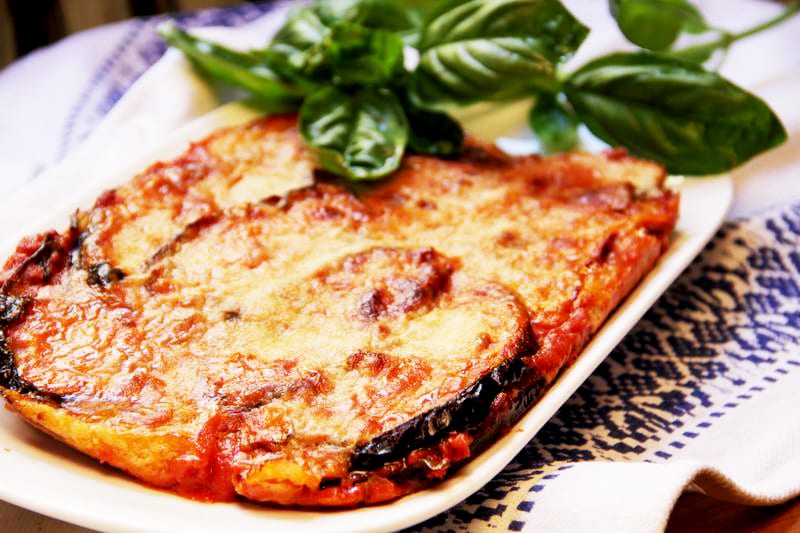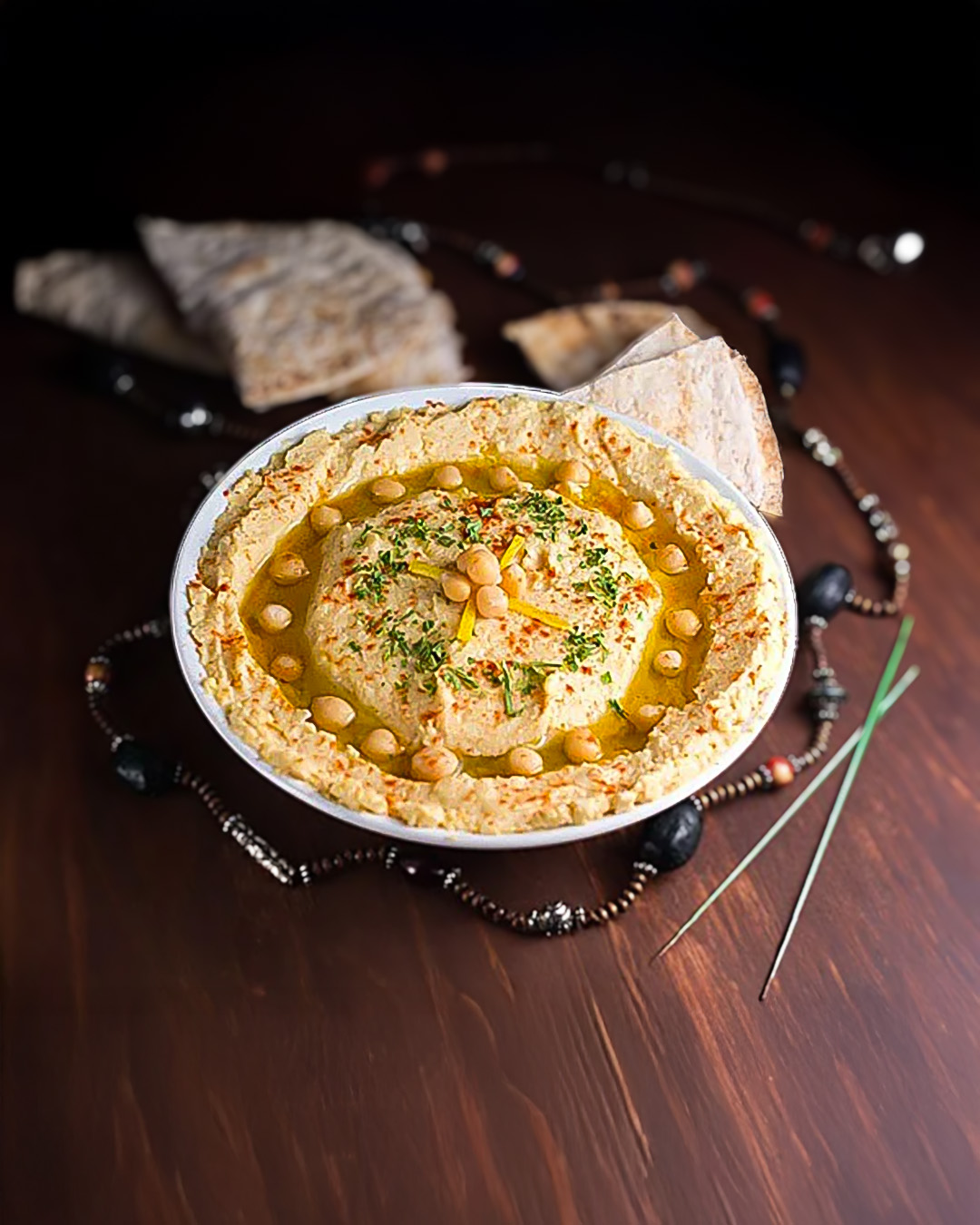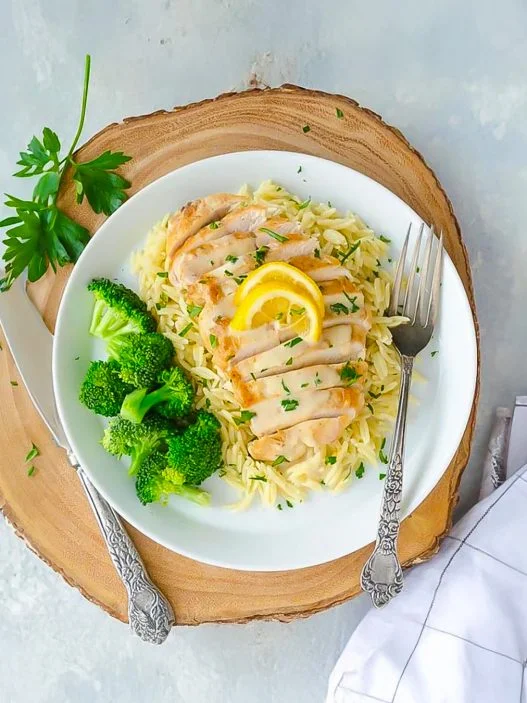Preparing the parmigiana can be time consuming, but well worth it and your kitchen will smell delicious while you work.
By Judith Klinger

In the U.S., ‘parm’ comes in four generic flavors: chicken, veal, meatball, or eggplant. Usually heavy, goppy and greasy, it’s an overweight distant relative of the sleekly elegant Italian parmigiana. Think Jersey Shore versus the Amalfi Coast.
In Italy, a parmigiana is made from vegetables like eggplant or zucchini, or even combined with some potato. It can be a light main course, or a contorni (vegetable side dish). In the summer, a parmigiana served at room temperature, along with a chilled white wine, is pretty much the perfect hot weather meal.
PrintPerfect Eggplant Parmesan Recipe
- Total Time: 1 hour 30 mins
- Yield: 6-8 1x
Description
Preparing the parmigiana can be time consuming, but well worth it and your kitchen will smell delicious while you work.
Ingredients
- 2-3 medium eggplants
- 1 medium onion
- 1 stalk of celery
- 2 cloves of garlic
- 1 liter of pureed tomato
- A lot of fresh basil
- 2 cups of grated parmigiana
- 1 egg
- Olive oil, sunflower oil, salt, flour, cornstarch
Instructions
- Thinly slice the eggplant and rub each slice with a small amount of salt. These slices are about a few millimeters thick. Remember: stiletto elegant, not running-shoe chunky!
- Stand the slices on end in a colander and let the slices drain out their excess water for about 20 minutes. Leave the colander in the sink or in a bowl because it’s surprising just how much water will drain out of the eggplant slices.
- While the eggplant is doing its drippy thing, it’s time to make the sauce. Finely chop the onion and celery and gently sauté them in a little olive oil for a few minutes. Add the pureed tomato sauce, garlic and basil.
- You should never cut basil with a knife because the basil will turn black where it has touched the blade; you are supposed to rip the basil into small pieces. But, let’s get real, standing there ripping basil into little pieces is either great anger management therapy, or a waste of time if you are going to be cooking the basil in a tomato sauce. I roughly chop the basil and toss it into the sauce. Simmer on low heat for about 20 minutes or until the sauce thickens and loses that ‘raw’ tomato taste.
- Here comes the fun part, frying the eggplant. This is actually the most time consuming part, so put on some good music and prepare yourself to stand at the stove for the next twenty minutes.
- Combine equal parts flour and cornstarch in a flat dish or on a cookie sheet. For 2-3 eggplants you’ll need about 3/4 cup of each.
- Dredge each slice of eggplant in the flour mixture, shaking off any excess flour. Don’t rinse the salt off of the eggplant slices; unless you’ve gone hog wild with the salt; most of it will have dripped off and there is no salt added to the tomato sauce.
- Heat the sunflower oil in a large, deep, flat bottomed pan. You want enough oil in the pan to allow the slices to float in the oil. You may need to add more oil as you go, but do so in small batches so you don’t dramatically lower the frying oil temperature. You want the oil to be around 350F/180C before you start frying the slices. Use a thermometer, don’t guess. If the oil is too cool, the eggplant drinks up the oil like it was water in the desert and you’ll get soggy slices. If the oil is too hot, you’ll scorch the slices instead of crisping them.
- Fry the slices until you see a little bit of brownage on the edges. Turn once and fry until the slice is a light golden brown. Think elegant eggplant chips, not sodden slabs. Drain the slices in a strainer over the sink. This is the best fried food tip I will ever give you. Don’t bother with layers of paper towels to soak up the grease, just use your colander. You’re welcome.
- Lay out your mise en place di parmigiana: grated cheese, the egg, sauce, slices and a baking dish lined with parchment paper. Heat your oven to 350F/120C.
- Ladle a small amount of sauce into the baking dish and spread it around using the bowl of the ladle, just like you’ve seen the pizza guys doing it. Add a layer of eggplant, a thin layer of cheese and keep building the parmigiana, but you don’t want more than 4 or 5 layers. Use a bigger baking dish if you need to, but don’t build higher!
- But, what about the egg, you ask? You’re going to use it for the top layer of sauce. Add a ladle full of sauce to a small bowl, break the egg into the sauce and whisk until thoroughly blended. If the sauce is still bubbling hot, do this step quickly so that you don’t risk scrambling the egg instead of blending it.
- For the top and final layer of the eggplant, add the tomato/egg sauce, cover with cheese and congratulate yourself on a job well done.
- Bake in the oven until it is brown and bubbly, approximately 30 minutes. Let it cool in the pan and then use the parchment paper to lift it out of the pan and onto a serving plate. Parchment paper is a wonderful thing.
- Prep Time: 1 hour
- Cook Time: 30 mins
- Category: Main
- Cuisine: Italian















Why the egg in the top layer of sauce? Also I’ve seen other recipes where they dredged the sliced eggplant in egg and then flour (or the reverse). I presume that would make a heavier dish. If you were to use zucchini or potato, would you do the same pre-salt/drain moisture treatment? Would you ever use all of these veggies in the same dish? or is it more typical to do a whole pan of zucchini parmegiano?
That is NOT the perfect Eggplant Parm, sorry.
I got to be back in your kitchen, the best tip you will ever give me and..
A great taste of summer, Montone and you,
Love you guys
Bon appettito
Peter